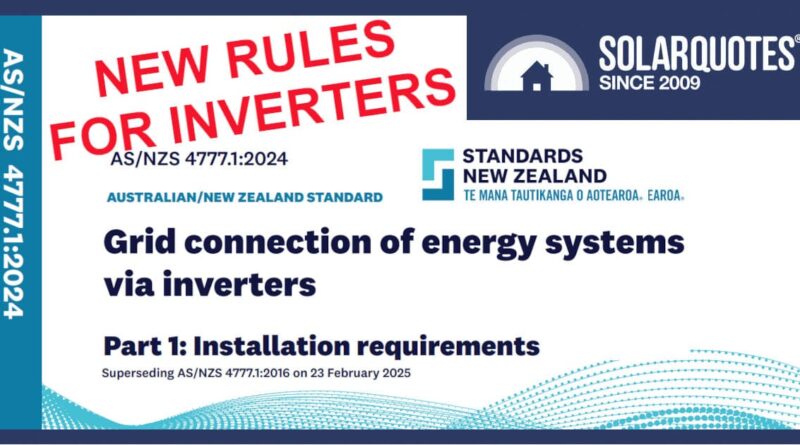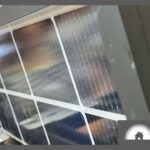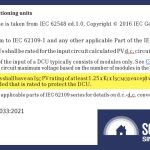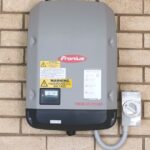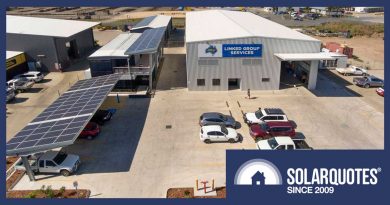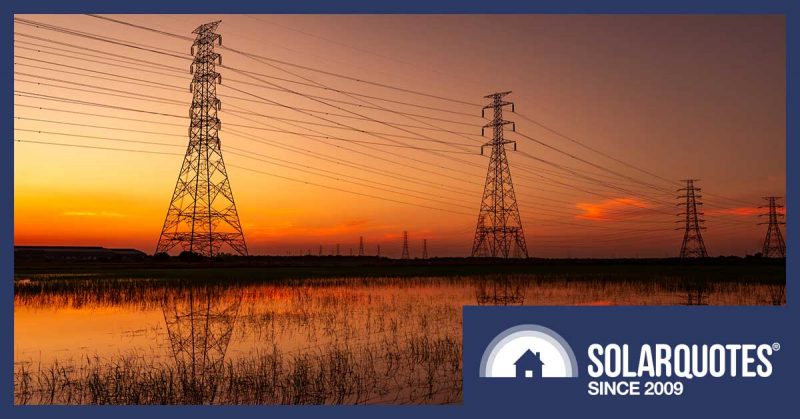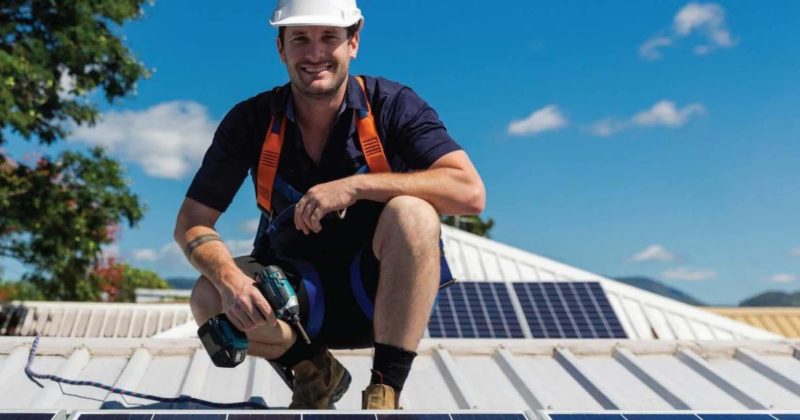AS4777.1 Updated! A Thousand Reasons To Love New Standards
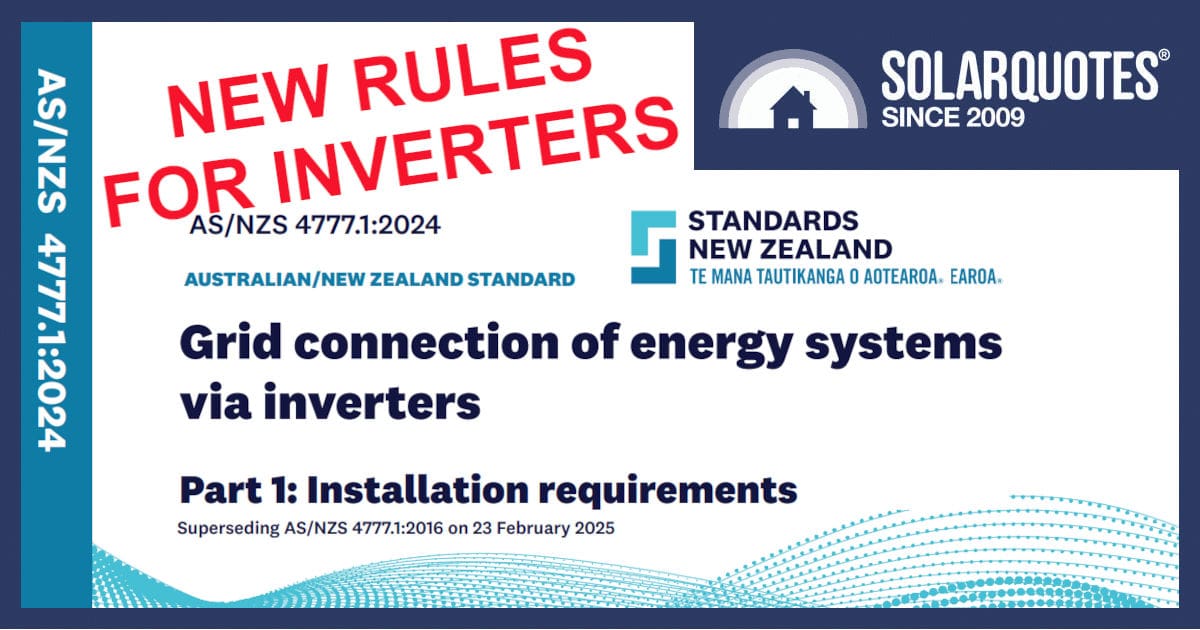
Australian Standards are too expensive, so we buy them from across the dutch.
Solar installers have a love hate relationship with the Australian standards. But with this week’s update of the solar inverter standard AS4777.1 there’s reasons to celebrate. Read on as I explain how raising the residential solar voltage limit to 1000 Volts DC helps put more solar on your roof and more AC power into your switchboard.
The first solar inverter I put on my house was a Latronics PVE 2500. Made in Queensland, it was notorious for being both reliable and inflexible. A single phase machine, with a single MPPT and maximum input of only 206 volts, it was a simple product for a simpler time.
Progress means inverter suppliers now offer wide operating windows but until AS4777 was updated, we couldn’t take full advantage.
In 2021 Australian installers & suppliers were cock-a-hoop when AS5033 (solar arrays) was updated to allow 1000V arrays. The happiness was short lived though. When some pedant pointed out AS/NZS 4777.1:2016 didn’t agree, there was much dismay.
The previous version of 4777.1 had an unnecessary mention of voltage, which limits grid connected inverter systems to 600V, creating a ludicrous situation where 1000V domestic systems were allowed but only if they were off-grid.
Now standards are harmonised they refer to, but don’t interfere with each other. And we can get on with installing more solar!
What Is Voltage, Anyway?
Solar panels are made up of many small cells that generate electricity. Producing about half a volt each, they’re connected in series to increase the output to a useful level. For example, 10 cells might be enough to charge a phone with 5volts, but for a practical panel we use 54, 60, 72, 96 or many more cells. Then to power your house, many more panels are connected together.
Think of it like water flowing through a pipe. The higher the voltage, the more “pressure” is in the system. With the old rules, we couldn’t put too many panels in series because the voltage would get too high.
The job of your inverter is to smooth this variable voltage Direct Current (DC) supply, into a steady 230V Alternating Current (AC) synchronised for use in your house.
Why 600 Volts Continues As The Norm
Most solar systems use panels connected in series to generate up to 600 volts DC. You can approach this threshold, but exceeding it can blow the inverter up.
The system design must consider your address because cold localities mean the voltage could rise well above the module’s sticker rating of say, 38Volts, so it’s not just a matter of dividing 600 by 38 for XX panels.
For your run of the mill single phase system, this rule change isn’t going to mean much. Electrically, it’s not hard to fully load a 5 or 6kW inverter with a couple of strings under 600 volts. The Fronius Primo 8.2 is the only unit I readily recall as single-phase and 1000-volt input.
Why 1000 Volts Is Better
It’s actually a matter of inverter topology. Anything is possible but inside the box it’s easy to convert sub 600VDC to 230VAC, whereas 1000VDC is more efficient when you want 400VAC output for 3 phase.
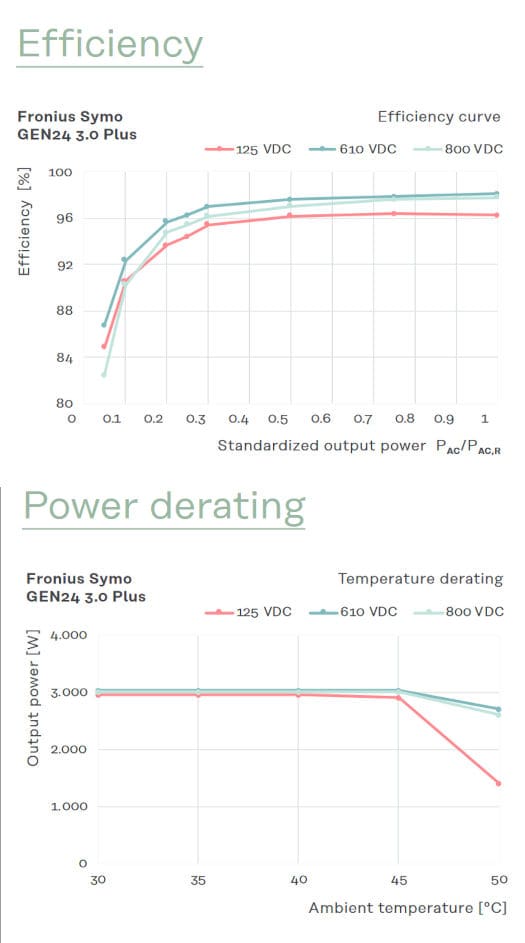
This small Fronius shows most vividly that low input voltages cost efficiency and create heat
With the new 1000-volt limit, we can connect more panels. For example, using nominal 38-volt panels, we could only use about 14 in series under the 600V ceiling, but now up to 24 panels are possible. This means we can generate more power from the same circuit, which is electrically more efficient, plus saves money, time and materials.
Higher voltage means every day the inverter starts earlier, finishes later and creates less waste heat.
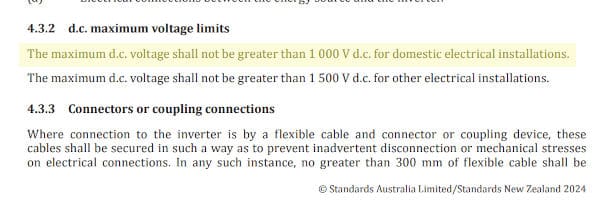
That’s what we’ve been waiting for.
Commercial Solar Is Already 1000Volt
If you’ve seen solar installations on schools or other large buildings, you may notice the inverters are in cages. This security measure isn’t for theft but is called up in the standard as “restricted access.” You’re not allowed to fiddle with it unless you have a tool for access.
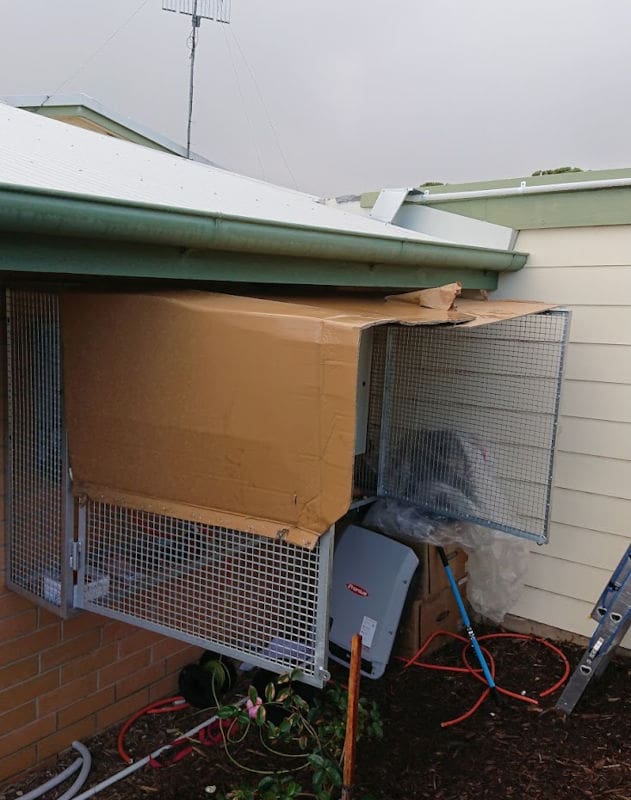
Combined with an inverter cage for support, cardboard makes a surprisingly durable rain shed for the installer.
Domestic buildings (as defined in the building code) were excluded but the solar industry rule of thumb was that if you slept inside, it couldn’t be 1000VDC. Unless it was a nursing home.1
How Big Systems Benefit
As solar prices plummeted and large systems became much more feasible, we ran into problems.
3 Phase inverters designed for 1000V input couldn’t be “filled up” without exceeding 600VDC, so large systems on large homes became expensive when you had to buy two or more inverters to be able to cover all the roof space and remain under the artificial ceiling.
The only advantage was having more MPPT inputs to cope with complex roof shapes and a good excuse to install a battery backed hybrid.
Wattage For Winners
If you have 3 Phase (or you’re looking to upgrade) these new rules are a boon. Get yourself some quotes and get as much solar as you can fit on the roof.
- The only consistent complaint I’ve ever had in 15 years doing solar is this; “I wish we’d installed more.”
- Systems get cheaper as they get bigger (in dollars per watt terms)
- Your consumption becomes a smaller part of the yield
- For any given hour, you can convert whatever sunlight is available into useful energy, especially at the ends of the day when the electricity is most valuable under TOU pricing.
I wholly recommend large solar systems and 1000VDC now offers flexibility to achieve that.
Tune in next time, I’ll explain more about 1000 volt systems with actual numbers. Plus, the other exciting2 changes with AS4777:2024
Footnotes
- As an aside, I’ve spent a lot of time doing solar in aged care homes. Those places are depressingly quiet and beige; they desperately need to be combined with child care centres. We owe it to the old people who need the company, and the young ones who need the wisdom. ↩
- really we have been dying for this update to come out ↩
Original Source: https://www.solarquotes.com.au/blog/as4777-1000v/

